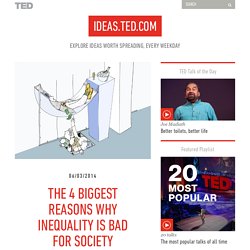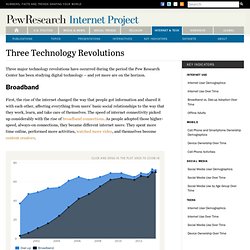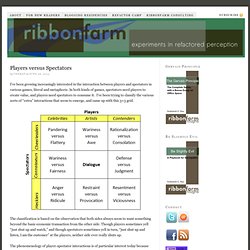

4 reasons we should fix economic inequality. It’s safe to say that economic inequality bothers us.

But why? Harvard philosopher T. M. Scanlon offers four reasons we should tackle — and fix — the problem. The great inequality of income and wealth in the world, and within the United States, is deeply troubling. One obvious reason for redistributing resources from the rich to the poor is simply that this is a way of making the poor better off.
A justification for reducing inequality through non-voluntary means, such as taxation, needs to explain why redistribution of this kind is not just robbery. These reasons for redistribution are strongest when the poor are very badly off, as in the cases Singer describes. It’s important to note, though, that there is another sense in which these reasons are not egalitarian: They are, fundamentally, reasons to increase the well-being of the poor rather than objections to inequality, that is to say, objections to the difference between what some have and what others have. 1. 2. 3. 4. T. The Forecast Calls For Spiders. What’s better than one spider?

How about several thousand? Sociality among spiders has independently evolved many times and is a highly conserved trait among some genera. So what does this mean? It means that with a bunch of spiders all working together, they can create much larger webs and can work together to take down much larger prey. One particular species in South America, Anelosimus eximius, can form colonies up to 50,000 strong, capable of making massive sheet webs that start near the ground and stretch up about 20 m (65 ft) high. While leaving the engagement party of a friend, a man in Brazil found a large group of spiders dangling overhead.
Who's Online: Internet User Demographics. Three major technology revolutions have occurred during the period the Pew Research Center has been studying digital technology – and yet more are on the horizon.

Broadband First, the rise of the internet changed the way that people got information and shared it with each other, affecting everything from users’ basic social relationships to the way that they work, learn, and take care of themselves. The speed of internet connectivity picked up considerably with the rise of broadband connections. As people adopted those higher-speed, always-on connections, they became different internet users: They spent more time online, performed more activities, watched more video, and themselves become content creators.
Mobile Second, mobile connectivity through cell phones, and later smartphones and tablet computers, made any time-anywhere access to information a reality for the vast majority of Americans. Social. The Asexual Spectrum: Identities In The Ace Community (INFOGRAPHIC) This is part of a six-part series on asexuality, in which we explore the history of the asexual movement, uncover current research on asexuality, debunk common misconceptions and discuss the challenges the asexual community faces.

Aces say that asexuality, like sexuality, exists on a spectrum. Most asexuals, when asked, will identify two orientations: a sexual one and a romantic one. "[The asexual lifestyle] allows you to see how sex and romance can be decoupled," said Anthony Bogaert, a professor at Canada’s Brock University and an authority on asexual research. "It allows you to see that when we automatically couple up romance and sex, as if they're naturally together, that's not true. " Infographic by Jan Diehm for The Huffington Post. This story appears in Issue 63 of our weekly iPad magazine, Huffington, in the iTunes App store, available Friday, August 23.
Also on HuffPost: Players versus Specators. I’ve been growing increasingly interested in the interaction between players and spectators in various games, literal and metaphoric.

In both kinds of games, spectators need players to create value, and players need spectators to consume it. I’ve been trying to classify the various sorts of “extra” interactions that seem to emerge, and came up with this 3×3 grid. The classification is based on the observation that both sides always seem to want something beyond the basic economic transaction from the other side. Though players sometimes yell “just shut up and watch,” and though spectators sometimes yell in turn, “just shut up and listen, I am the customer” at the players, neither side ever really shuts up.
The phenomenology of player-spectator interactions is of particular interest today because the Internet has seriously muddied the clarity of roles and relationships all around. Here’s how you read the chart. Players who are still in the game can be classified into three kinds. Players versus Specators.